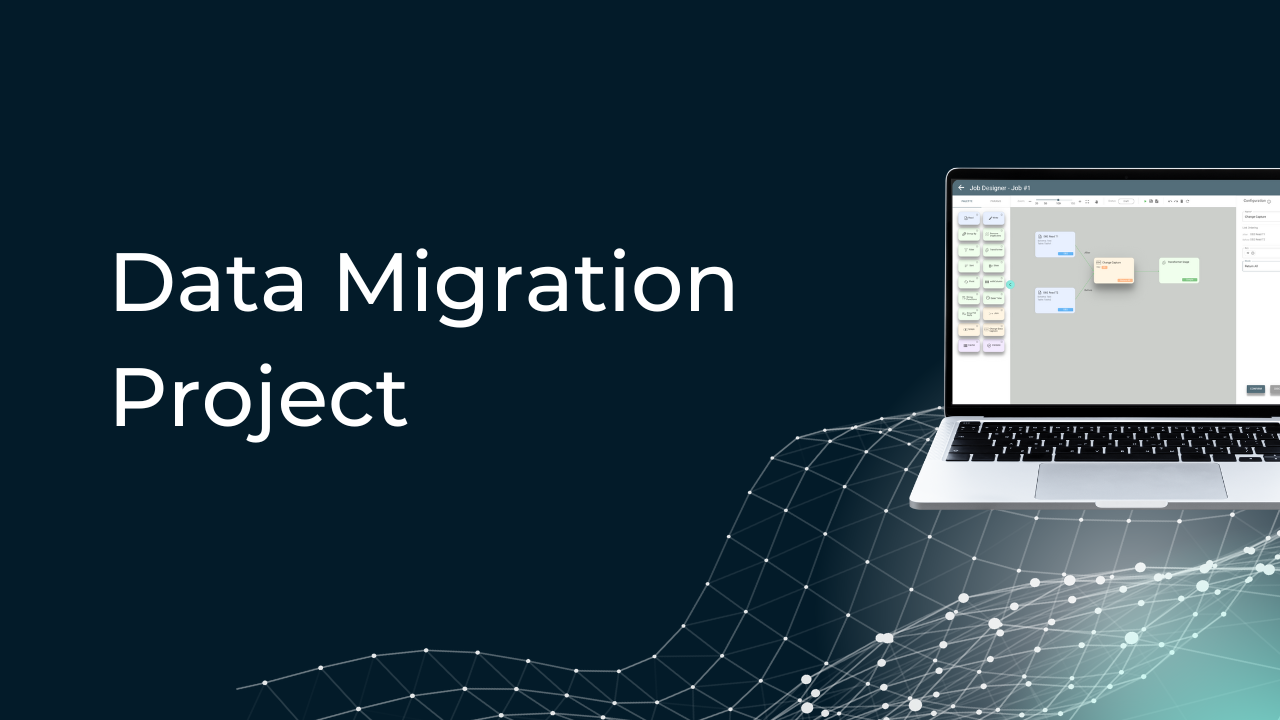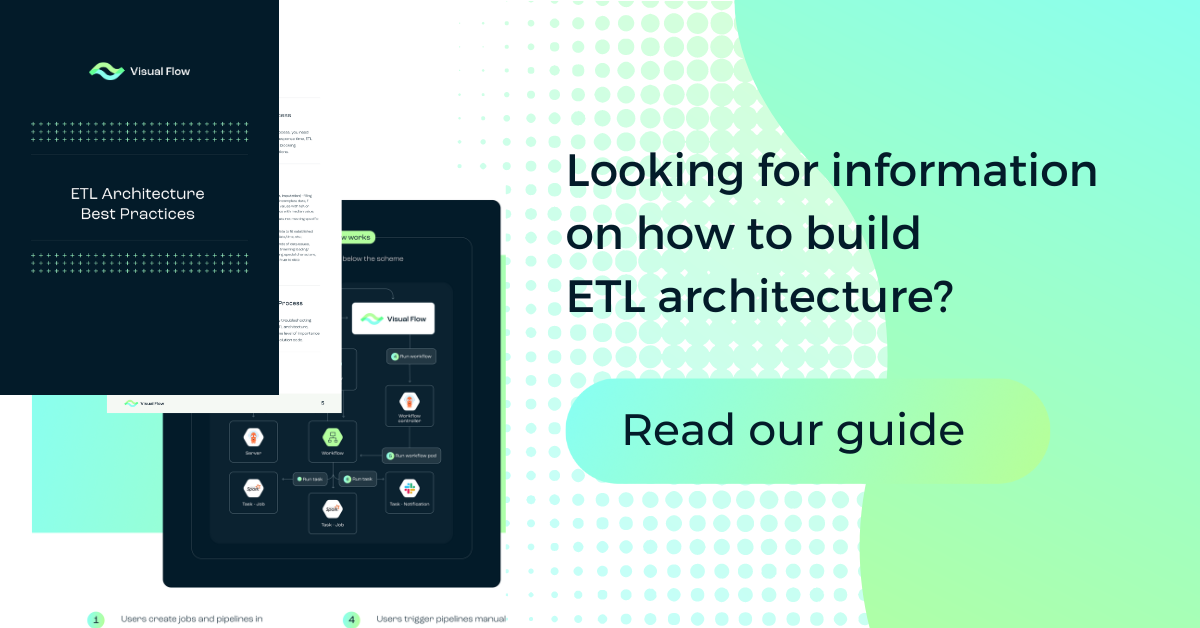Table of Content:
Table of Content:


Businesses often need to migrate data to upgrade their systems, consolidate information, or move to the cloud. However, if they don’t plan this process or execute it improperly, data migration leads to significant issues, such as data loss, prolonged downtime, and corrupted data.
In this article, we’ll tell you what data migration means, explore the main types of data migration, and show you some common challenges businesses face.
What Does Data Migration Mean?
Data migration is the process of transferring data between different types of storage systems, formats, or computing environments. It’s an indispensable step for businesses that are upgrading their systems, consolidating databases, or transitioning to cloud-based solutions.
Think of it as moving your entire digital life from one place to another. It involves ensuring that all data remains accurate, complete, and functional in the new environment. This process usually includes planning, testing, and executing the migration to minimize any disruptions to business operations.

Main Types of Data Migration
There are five types of data migration suited for different scenarios and needs:
- Storage migration. This involves moving data from one storage device to another. For example, transferring data from an on-premises server to a cloud storage solution. The goal here is often to upgrade to faster, bigger, or more cost-effective storage systems without changing the data format.
- Database migration. In this type of migration, data is moved between different database management systems (DBMS). It can be from Oracle to SQL Server or from an on-premises database to a cloud-based service like Amazon RDS. This requires careful mapping of database schemas to ensure data integrity.
- Application migration. This process involves moving applications and their associated data from one environment to another. For instance, migrating an on-premises application to a cloud platform. This type of migration usually requires reconfiguring the application to function correctly in the new environment.
- Cloud migration. Cloud migration refers to moving data, applications, or other business elements from on-premises infrastructure to a cloud computing environment, or from one cloud provider to another.
- Business process migration. This involves transferring business processes and workflows, along with their associated data, to a new system. It’s common during mergers and acquisitions when businesses need to consolidate operations.
You should identify the type of data migration you’re dealing with to better prepare for the specific data migration issues and risks involved.
Popular Data Migration Challenges and How to Solve Them
Some challenges may complicate the process of data migration. Here, we address some of the most common data migration risks and provide tips to help you solve them.
Loss of Data
Losing critical data during migration can cripple business operations and result in incomplete datasets. This often happens due to errors in data mapping or failed transfers.
Here’s how you can protect your data:
- Before you start migrating, perform full backups of all your data. Store these backups in a secure, offsite location to ensure they’re safe if something goes wrong.
- Regularly conduct incremental backups to capture any new changes made to your data since the last full backup. This ensures that even the latest updates are included.
- Conduct dry runs or test migrations with a sample of your data. This helps identify potential issues so you can resolve them before the actual migration.
- After the migration, compare records in both the source and target systems to ensure all data has been successfully transferred. Automated tools will help you speed up this process.
- Have a plan B to quickly revert to the previous system if any data is lost during migration. This minimizes disruptions and helps maintain business continuity.
As a result, you can reduce the risk of data loss during migration.

Semantic Mistakes
Semantic mistakes occur when data is misinterpreted due to differences in data formats or structures between the old and new systems. These errors lead to incorrect data interpretation and flawed business insights.
To avoid semantic mistakes:
- Carefully map out data fields from the source system to the target system. Ensure that each field’s purpose and format are clearly defined and understood by everyone involved in the migration.
- Conduct thorough validation and testing of the data after transformation. Verify that the data behaves as expected in the new system, and make adjustments as necessary.
- Engage subject matter experts who understand the nuances of your data. Their insights will help you identify potential semantic issues and ensure that data is accurately represented in the new system.
- Maintain detailed documentation of the data mapping and transformation processes. It serves as a reference and helps ensure consistency throughout the migration.
These strategies will help you reduce the risk of semantic mistakes and ensure that your data is correctly interpreted in the new system.
Prolonged Downtime
Extended downtime during data migration disrupts business operations, leading to lost productivity and revenue.
To minimize downtime:
- Schedule the migration during off-peak hours or over weekends when business activity is lower. This reduces the impact on day-to-day operations.
- Break down the migration process into smaller, manageable phases. This approach allows parts of the system to remain operational while others are being migrated.
- Conduct testing before the actual migration. Identify potential issues and resolve them during this phase to avoid data migration testing challenges, such as unexpected downtime during the live migration.
- Have a robust backup and recovery plan to quickly revert to the previous state if something goes wrong.
- Keep all stakeholders informed about the migration schedule and potential downtime. Clear communication helps manage expectations and prepare for any temporary disruptions.
Now you can reduce downtime during data migration and maintain business continuity.
Corrupted Data
Data corruption during migration results in incomplete or unusable data on the new system and severely impacts business operations.
Here’s how to prevent and address data corruption:
- Implement error-checking mechanisms throughout the migration process. They detect and correct errors in real time.
- Conduct validation checks at multiple stages of the migration. Verify that data is accurate and complete before, during, and after the transfer.
- Keep detailed records of all migration activities. An audit trail helps track any discrepancies and provides a reference for troubleshooting issues.
- Clean and standardize your data before migration to reduce the risk of corruption. Remove duplicate records and fix inconsistencies.
- Perform extensive testing after the migration to identify and resolve any data corruption issues. Compare datasets in both the old and new systems to ensure they match.
And that’s it — you are ready to protect your data from corruption during migration and ensure it remains complete and usable in the new system.

Application Performance
Poor application performance during or after data migration leads to slow response times, user dissatisfaction, and potentially lost business.
This is how you can maintain and improve application performance:
- Before starting the migration, benchmark the current performance of your applications to understand the baseline and set performance goals for the new environment.
- Ensure that the new system has adequate resources (CPU, memory, storage) to handle the expected workload.
- Review and optimize your data structures during migration. Indexes, partitioning, and normalization improve performance as they make data retrieval more efficient.
- Conduct comprehensive load testing in the new environment to identify potential performance bottlenecks.
- Consider rolling out the migration in increments rather than all at once to monitor performance in stages and make necessary adjustments before full deployment.
These strategies lead to a better user experience and continued business success.
Training Users
Migrating to a new system often requires users to learn new processes and tools. This leads to confusion, decreased productivity, and resistance to change.
Here’s how to effectively train users:
- Involve users early in the migration process. This helps them understand the reasons behind the change and makes them feel part of the process.
- Develop detailed training programs tailored to different user roles, including hands-on sessions, tutorials, and resources that cover all aspects of the new system.
- Provide easy-to-follow documentation and step-by-step guides. Visual aids like screenshots and videos will enhance understanding and retention.
- Conduct interactive workshops and live demonstrations to allow users to ask questions, practice tasks, and gain confidence using the new system.
- Create a library of on-demand resources, such as video tutorials, FAQs, and user manuals.
Now, your users are well-prepared and confident in using the new system.

Data Protection
Ensuring data protection during migration is important to prevent unauthorized access, data breaches, and compliance issues.
To safeguard your data:
- Use strong encryption methods to protect data both in transit and at rest. Even if data is intercepted, it will remain unreadable to unauthorized parties.
- Employ secure transfer protocols, such as SFTP, HTTPS, or VPNs for data transmission.
- Implement strict access controls to limit who can view or modify the data during migration. Use role-based access control (RBAC) to ensure only authorized personnel have access to sensitive information.
- Use data masking techniques for highly sensitive data to anonymize information during migration.
- Ensure that your migration process complies with relevant regulatory requirements (e.g., GDPR, HIPAA).
This is how you can ensure that your data remains protected throughout the migration process.
Quality of Data
The quality of data during migration is important as it helps maintain data integrity, accuracy, and reliability in the new system.
Here’s how to ensure high-quality data:
- Begin with data profiling to understand the current state of your data. Identify inconsistencies, duplicate records, and other quality issues that need to be addressed before migration.
- Implement a data cleaning process to correct errors, fill in missing values, remove duplicates, and standardize formats.
- Set up validation mechanisms to check data accuracy at multiple stages of the migration.
- Conduct thorough quality assurance testing post-migration. Compare key datasets between the old and new systems to verify that no data has been lost or corrupted during the process.
- Maintain accurate metadata to provide context and meaning to your data. Proper metadata management helps in understanding data lineage, relationships, and transformations, ensuring quality and traceability.
Also, don’t forget to implement continuous monitoring to detect and address data quality issues proactively. Real-time monitoring tools will alert you to anomalies, so you can intervene immediately.
Insufficient Cloud Storage Provisioning
Running out of cloud storage is not just an inconvenience — it can disrupt your operations, lead to unexpected costs, and even cause downtime.
Here’s how to make sure you always have enough cloud storage:
- Start with a detailed assessment of your current and future storage needs. Look at data volume, growth rates, and peak usage patterns.
- Don’t just think about today — plan for tomorrow. Provision extra storage capacity to accommodate future data growth. This way, you won’t need emergency upgrades.
- Optimize your storage costs by using a tiered strategy. Store frequently accessed data on high-performance storage, and move less critical data to more economical storage tiers.
- Many cloud providers offer automatic scaling features. These tools can dynamically adjust your storage capacity based on your actual use.
- Keep a close eye on your storage usage with monitoring tools. Set up alerts for when you’re nearing capacity so that you can take action before hitting the limit.
You can also work closely with your cloud vendor to understand the available storage options and best practices.
Old Systems and Obsolete Technology
Relying on outdated systems and obsolete technology can hold your business back and lead to inefficiencies, higher maintenance costs, and increased risk of failures.
To modernize your IT infrastructure:
- Assess your existing systems. Identify hardware and software that are no longer supported or fail.
- Not all systems need to be replaced at once. Prioritize upgrades based on criticality, potential impact on operations, and the availability of better alternatives.
- Move from on-premises solutions to cloud-based services where possible.
- Stay up-to-date with new technologies, such as AI, machine learning, IoT, and advanced analytics.
- Ensure that new systems integrate with existing ones. Interoperability helps avoid data silos and ensures communication between different parts of your organization.
Use our tips to avoid these common data migration challenges. If you need professional assistance in terms of ETL migration and modernization of your IT infrastructure, check out our ETL migration consulting services. We’ll help you easily transition to modern, efficient systems.

The Importance of Addressing Data Migration Challenges
Data migration challenges can affect the integrity and usability of your data if not handled properly. That’s why it’s important to solve them head-on:
- Keep your data accurate. Errors or corruption lead to bad decisions and operational hiccups.
- Protect sensitive information. A data breach during migration can have serious consequences, including legal issues and loss of customer trust. Implement strong security measures to keep unauthorized users out.
- Many industries have strict regulations regarding data handling. Addressing data migration issues helps you stay compliant and avoid fines.
- Unplanned issues during migration result in unexpected costs. Address these challenges upfront to better manage and predict expenses.
- Solving current data migration problems sets you up for future success. Establishing best practices now ensures your organization is ready for any upcoming data migrations.
- Clean, well-migrated data allows new systems to operate at their full potential.
And the last tip — get expert help. Professional services offer tailored strategies and solutions. For example, our best practices for data warehouse migration provide insights and support to help you set up a successful migration.

Final Thoughts
The right approach can transform the data migration process from a scary project into a strategic advantage. As a result, you are prepared for better analytics and more optimized operations. So, don’t be afraid of data migration risks — they are worth solving.
Contact us































































